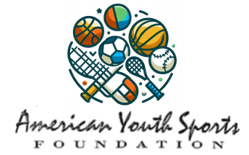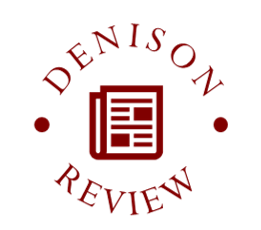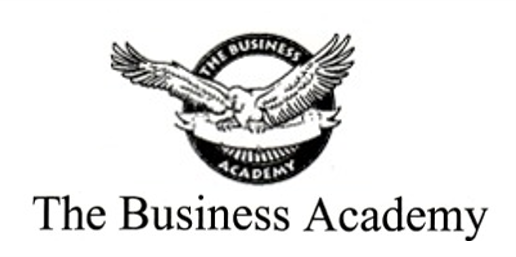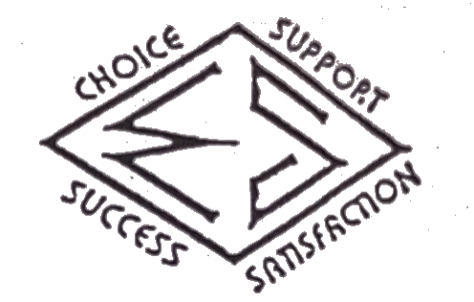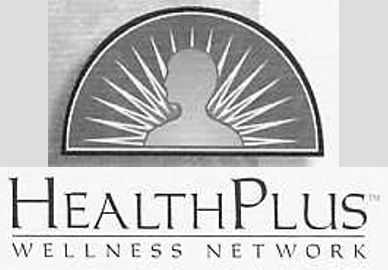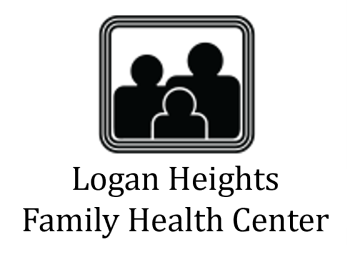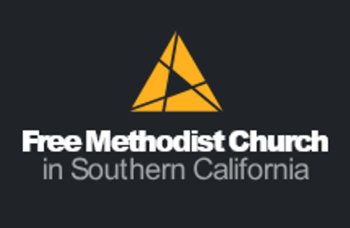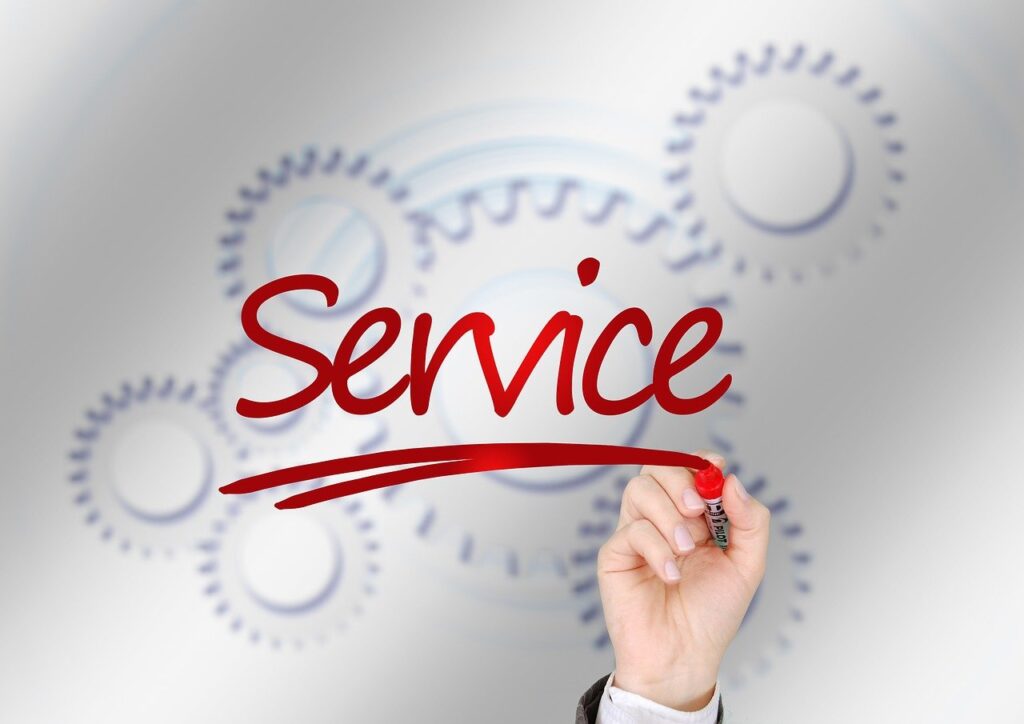
Why a Miami Valley Customer Care
Community Co-Lab™ Partnership
Miami Valley Customer Care
Community Co-Lab™ Partnership
Miami Valley Visionary: Ed Butcher
Opening Insights
…The Gallup 2024 data is clear:
Despite this massive investment in workforce training and development, employee engagement for the last 24 years has remained stagnant at just 30% in the U.S. a staggering 70% of employees are disengaged, with 18% actively disengaged.
And now organizations “The New Growth Hormone”…
AI, in its various forms,
which mirrors and amplifies its culture.
… excerpt from “eAdI Team Culture Blueprint” explore more
What does this mean in DOLLARS?
Gallup estimates that each disengaged employee costs their employer 18% of their annual salary in lost productivity EVERY YEAR. A $60,000/year employee equates to $10,800 lost productivity ANNUALLY.
Forbes reports that Gallup shows the differential in business units with engaged vs disengaged employees: 23% higher profitability; 28% difference in theft; 58% difference in patient safety (mortality and falls) in healthcare; a 32% difference in quality (defects); a 63% difference in safety incidents (accidents); a massive 78% difference in absenteeism.
We can’t continue to pass the cost of disengagement onto the consumer. Our commerce and our economy cannot continue to sustain these levels.
… excerpt from “Organization Culture Value-ation Indicator™ (OCVI™)” explore more
Customer Care for many organizations is a never ending leaky bucket.
Do you suppose we were trying to solve the wrong problem?
Informational Insights
My name is Ed Butcher and for over 25 years, my company has measured performance in a variety of industries – ranging from men’s retail clothing stores, franchised auto repair shops, mortgage loan companies, business coaching and on and on.
Many organizations, if not almost all, are facing major issues with Customer Care and they cannot find a permanent solution that produces long-term results. My company’s experience has shown for over 25 years that proves the lack of a permanent successful solution that produces proven and measurable improvements in the levels of Customer Care.
My search was for ways to improve customer service for all organizations (engagement required). This search was conducted within many organizations including Businesses, Education, Service, Religious, and more.
- Training did not produce improvement: We frequently see variances in the amount of product knowledge and application.
- Coaching did not produce improvement: We notice a lot of resistance to change – employees refuse to cooperate in trying to improve their performance.
- Data timeliness and accessibility did not produce improvement: Based on the number of sign-ons to our website, we know that not many dealers take advantage of the data and reports that are available.
- Better assessments did not produce improvement: For companies that use assessment tools to hire employees, they have not produced a measurable improvement.
Does this remind you of the definition of insanity?
After searching for all those years, I was introduced to a company that understands the problems we face and has done something about it.
I have learned there is a proven solution to neutralize this challenge and re-engage people
- without intervention, which is confrontational
- without motivation, which is fleeting and ineffective
in a manner that develops emotional maturity:
- self/shared authority,
- self/shared responsibility, and
- self/shared accountability all rooted in a positive self-esteem (not ego).
As my partnership with them continues to grow, I have experienced their process to know that together we can begin to produce better results throughout your organization, but needed to learn the true meaning of Followship-Leadership™.
Awareness Communication Technology, LLC, a Microsoft Gold Research and Development Company recognizes the magnitude and source of today’s challenges and has developed a ePublishing Platform that focuses on true collaboration and communication solutions. The architecture of this platform includes interactive TECHNOLOGIES, METHODOLOGIES, down-to-earth HUMAN UNDERSTANDING, and DATA SCIENCE.
This unique Business Model and ePublishing Platform has a built-in Collaboration Laboratory (“Co-Lab™”) Institute that creates sustainable and profitable environmental cultures that reduce fear, raise human intelligence and create a space to ignite and fan the fire of our individual and collective creativity.
In the Community Co-Lab™, AwareComm® partners with Industry Leaders in select industries who have the courage to be Heroes: that are seeking real solutions to the problems within their field; seeking the power to effectively deliver and communicate their solutions to the world; and seeking the business strategy, partnerships and plan to make their solution engaging and sustainable (Self-Funding – Self-Regulating – Self Perpetuating) through solidarity.
Possibilities for Consideration
What if…
- Your organization (Visionary Co-Lab™) became an industry leader (in a Community Co-Lab™) that could contribute to building more successful organizations – much as in “pay it forward.”
- You could join your industry in a network so they all can contribute to each other’s success.
- You received accurate feedback on your training, so you know what is working and what is not working.
- Each organization could positively impact their employees lives both on the job and at home.
- Each organization could transform disengagement into true engagement.
- Each organization could see the pockets of undercurrent that undermine the culture and have a workplace appropriate manner to address it.
- Each organization through the Customers for Life program could improve customer loyalty and customer care.
- Each organization is able to improve the quality of employees’ they hire thus reducing turnover and building higher customer satisfaction.
- Each organization could increase their net income year over year.
Let’s go a step further:
- What if you could be a part of cultural transformation?
- What if you could be a part of empowering your organization, community and country?
- What if you could be a part of the social, economic and cultural growth and empowerment of your world?
- What if you could do something to reverse the addiction problems within businesses, communities and schools?
- What if you could create value for your people, employees, families, organizations, communities and country?
- What if you could share your wisdom, insight, knowledge and experience to help educate others?
- What if you could be a part of a solution to unite and support people in developing collective and individual sentience?
If you would like to make these “what if” questions a reality…
Then, you may be interested in this PROVEN SOLUTION.
This goes beyond just concepts, words, and techniques. This solution that I have found is tested, proven, and paid for. It is a full Ecosystem not a single product.
In addition to what it offers Leaders like us and Organizations through its Community Co-Lab™ Partnerships and Visionary Co-Lab™, there is a component that is now being integrated as a new dimension of Artificial Intelligence. This goes beyond machine programming, it creates a new dimension of man-machine relationship that is rooted in interdependence rather than the traditional models of control over / control under.
The intent is to introduce you to the impact that we can have on our dreams, our organizations, and our unified communities. While here, you can explore AwareComm®, the creators of the Community Co-Lab™, the eAdI™ business model, and whom we will be partnering with, learning from, working with, and following their direction to make this happen (the application of how Leadership-Followship™ develops Followship-Leadership™ as cause and effect).
The Process of Exploration
Carefully review my Blog (this page). I will follow up with you within a few days, to find out:
“What stood out to you? What did you learn?”
Based upon your response we can consider scheduling you with a rare opportunity to meet with the Founder and CEO of AwareComm, Richard Jorgensen PhD (hc) and a few select members of his team who would be our primary guides in developing our Miami Valley Customer Care Community Co-Lab™ Team.
Your Dream is what Richard is going to be interested in hearing about. Everybody has a dream… were you able to see a Dream you have… be able to come to life?
That is why the meeting is called a Due Diligence Meeting. During this meeting, Richard and the selected team will want to learn about your dream and together we can examine how a Visionary Co-Lab™ and the larger picture of a Miami Valley Customer Care Community Co-Lab™ Partnership can make your dream a reality and explore role opportunities for you to be engaged in the larger picture of the Community Co-Lab™.
I can assure you that meeting Richard, as he prefers to be called, you will see the opportunity to make a difference in our community, which could include the projects you are starting.
Having been mentored by the founder of modern-day Venture Capital, Ned Heizer (Heizer Capital LLC), Richard will be assessing us as to the probability of making the Community Co-Lab™ a reality. This is a selection process not something we just get to do. It is a joining with, not a getting from. It is very important to read carefully, not skim, to be able to be prepared for the meeting.
This is no small project the Miami Valley Community Co-Lab™ Foundation Team will start with 10-12 members with each of the foundation members then adding 3-4 additional members to round out the full Industry Influencers as you will see in the Community Co-Lab™ eMod™ eBook call the Ship’s Log.
Keep in mind that I am not selling you anything. Together we will partner with, be trained by, and mentored by AwareComm® to build eAdI™ organizations (Visionary Co-Lab™) as a co-operative alliance (Community Co-Lab™) that will make a difference in our organizations, our communities and in many lives... as AwareComm says: going beyond just profit to lasting purpose.
As the Team Leader of the Miami Valley Customer Care Community Co-Lab™, I am encouraging you to explore this page and the AwareComm® site and then meet with Richard and myself to see in more detail how together we, as a team, can begin producing the change that is necessary in our organizations, community and country to build unity and solidarity among all. I am clear, confident, and proud to be part of this incredible movement.
I openly encourage other business and community Leaders/Visionaries to explore the possibilities.
Excerpts from the Visionary Co-Labs™ and the Community Co-Labs™ Webpages
Visionary Co-Labs™
Unify “People Strength” and Deepen Trust,
Freewill, and Engagement
The “What”: eAdI™-infused Products/Services/Insights,
eMod Apps™, eMod App-ons™, SOS Support,
AdR-eAdI™ AI Copilot
Visionary Co-Labs™ embody the Visionary/Leader’s Mission manifested through their team(s).
The Co-Lab™ Institute’s experiential process (Steps 1-6) enables these team(s) to: implement principles to enhance engagement, overcome hidden challenges, deepen market applications with eMod-ular Adaptive Intelligence™, identify audience’s new needs, and expand and diversify revenue, partnerships, and market reach.
… excerpt from “Visionary Co-Lab” explore more
Community Co-Labs™
Create Community Power
and Exponential Grow
The “Where”: Partnerships, Community Capitalism,
Cross Pollination, Trust-based Solidarity
Community Co-Labs™ house a co-operative alliance of Visionary Co-Labs™ who create collective interdependent power for exponential growth, industry influence, and resolution of systemic community challenges (Co-Lab Institute’s™ Step 7 – E.A.R. App).
✔ Create a robust, eAdI™-anchored commerce ecosystem that fosters a prosperous community economy, facilitated by the private eAdI™ Community eMod-ular Adaptive Resource™ (E.A.R.™) App.
Positioning and Timing: A way to collectively attract and combine financial resources to cross pollinate commerce with great strength, power, and wealth (Community E.A.R. App).
Rather than having the economy (money) driving commerce, which in turn perpetuates fear-based cultures (today’s reality), we are actively creating new power via value-based commerce to return sovereignty to the people (culture), which will enable us to create a stable economy, create our own wealth, and be free of the established power structures.
… excerpt from “Community Co-Lab Partnerships” explore more
Our Field Research Partners offered us an incredible opportunity to
test our intentions, technologies, methodology, and implementation in the real world
across industries, economic scales, and environments.
Explore their insights and results.
Excerpts from Field Research Community Partners
Solving Community Problem in the Process
As the natural process of the Community Co-Lab™ and their companion Visionary Co-Labs™ is the resolution of community problems such as Homelessness and Non-profit’s funding challenges. The Visionary Co-Lab™ will work with corresponding Homeless programs that have adopted the Visionary Co-Lab™ Process creating a Co-Lab Symbiotic Relationship™ between for-profit and non-profit. This is Step 6 of the Co-Lab™ Business Model.
… excerpt from Homeless and County Mental Health Partners “Insights and Results from Our Field Research Partners” explore more
… excerpt from Business, Org, Schools, and more: “Insights and Results from Our Field Research Partners” explore more
The early field research of this process created results such as the following:
Our Field Research Partners offered us an incredible opportunity to
test our intentions, technologies, methodology, and implementation in the real world
across industries, economic scales, and environments.
Explore their insights and results.
Government Social Services
Professional and Social Services, Employment Rehabilitation, and Addiction Recovery
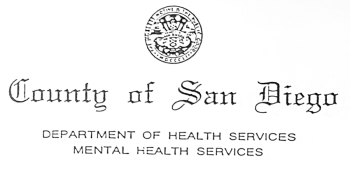
County Mental Health Staff Training: Politics and Long Standing Conflicts are a Thing of the Past

County Mental Health Staff Training Evaluation: Overall Excellent Rating Summary
Addiction Recovery Centers, Rescue Missions-Men, Woman and Children, and Employment Rehabilitation
Non-Profits, Employment Rehabilitation, and Addiction Recovery
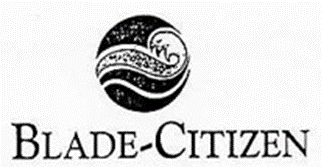
From Homeless to High Performers:
22% Sales Boost

Non-Profit Becomes Independent of Federal Funding:
165% Cash Inflow Boost

From Homeless to Top Notch Employees at
Armor Safe Technologies

Resident Employees Experience a Potent and Concentrated Metamorphosis

Homeless Selling Papers: Sales Soar from 200 to 5,000+ a Week After Completing eMods™
Casa Dropout Rate Decrease by 50%

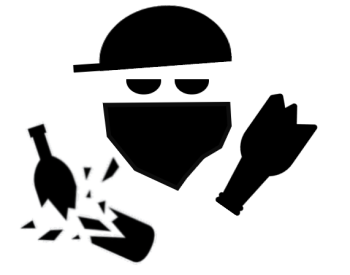
Gang Leader Turned Co-Facilitator:
Learning Begins with Leadership Creating the Environment and
Followship™ Building the Reality with His Gang

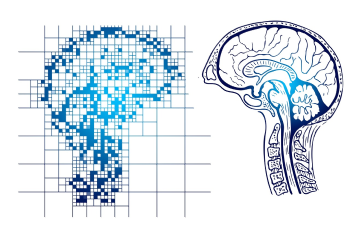
Rod’s Path: From Addict to a Beautiful Life – A Letter at the 15 Year Mark


Wolfman’s Path to Recovery:
Outruns Homeless History
… excerpt from “Insights and Results from Our Field Research Partners” explore more
Pertinent Principles
An Excerpt from the eAdI™ Team Culture Blueprint Webpage
The Reality of Organizational Resistance and Its Impact
A Hidden Issue with a Name
Organization culture is not dictated solely by leadership; it is influenced by unseen forces beneath the surface. While official policies and stated values set the framework for organizational success, the reality of day-to-day operations is often shaped by an invisible undercurrent: Adaptive Resistance™ (AdR™).
What is Adaptive Resistance™?
Adaptive Resistance™ (AdR™) is a learned and perpetuated fear-based dimension of thinking and behavior that works against innovation, engagement, and progress. It creates an illusionary sense of security by either blanket resistance to change or, conversely, forcing change that is misaligned with the organization’s vision and goals. This leads to the rejection of leadership’s objectives keeping individuals, teams, and organizations trapped in rigid mindsets, unproductive cycles, and cultural stagnation.
This isn’t just passive reluctance or aggressive defiance. It is an active and systemic force that undermines progress.
Individuals operating in AdR™:
- Focus on problems rather than solutions – stuck in a cycle of blame and avoidance.
- React emotionally instead of reasoning critically – allowing fear to override discernment.
- Defend old ways of thinking at all costs – even when they no longer serve them.
- Resist collaboration and learning from others – seeing knowledge-sharing as a threat rather than a tool.
- Shift responsibility onto others instead of taking accountability – fueling blame and authority conflicts.
- Manipulate decisions to protect the status quo – relying on hidden agendas and control tactics.
- Block innovation through passive-aggressive resistance – sabotaging new ideas.
- Prioritize individual power over collective progress – fostering emotional immaturity and power struggles.
Adaptive Resistance™ (AdR™) is not always loud. It often exists beneath the surface, unnoticed and unchallenged.
From the unseen currents of Shadow Culture™ to the withdrawal of Disengagement and the grip of Addictive Behaviors, three distinct yet interconnected expressions of Adaptive Resistance™ (AdR™). At their core, they stem from the same underlying force: AdR™.
“Most of these attitudes and behaviors go unnoticed;
we learn to ignore them. Worse yet, we tolerate them.”
Known by the Company You Keep
eMod eBook Pg. 66
Like an iceberg, only a fraction of organization resistance is visible above the surface. The true impact lies below – where unspoken tensions, disengagement, and cultural resistance silently erode trust, collaboration, and innovation. What remains unseen shapes decision-making far more than what is acknowledged. …
… excerpt from “eAdI Team Culture Blueprint“
The Shadow Culture™: How AdR™ Spreads
In many organizations, those trapped in AdR™ form an unofficial network, a Shadow Culture™, that holds more power than official policies or leadership. This network thrives in back-channel conversations, unspoken rules, and informal hierarchies that dictate how decisions are truly made.
One of the most damaging characteristics of a Shadow Culture™ is its ability to reinforce resistance through fragmented alliances. Rather than engaging in open, solution-oriented dialogue, individuals form pockets of dissent – echo chambers where negativity is strengthened, and opposition becomes ingrained. These networks create an environment where disengagement and dysfunction flourish, preventing organizations from evolving in alignment with their vision.
AdR™ starts at an individual level → Grows into a organization phenomenon → Becomes an embedded Shadow Culture™.
The reality of this systemic impact hits hard. Organizations cannot thrive when their true culture is dictated by resistance rather than vision. The stronger the Shadow Culture™, the harder it is for leadership to implement meaningful and constructive objectives. …
… excerpt from “eAdI Team Culture Blueprint“
 The Growing Crisis of Organization Disengagement
The Growing Crisis of Organization Disengagement
One of the most alarming manifestations of Adaptive Resistance™ (AdR™) in the organization is disengagement. While many employees technically fulfill their job requirements, they are far from real contributors. They do the bare minimum, operating in a state of passivity that is neither grounds for termination nor a source of meaningful participation. Their presence is physical, but their engagement (mental, emotional, and creative) is absent.
This phenomenon extends beyond traditional performance evaluations. Disengaged employees are not always the loudest complainers or the most visibly dissatisfied. Instead, they exist in a passive state, complying without investing, present without contributing.
The Data Is Clear: Disengagement Is a Stagnant Crisis
For decades, organizations have poured billions annually (NCADD) into engagement initiatives, leadership training, and organization culture programs. Yet the numbers haven’t changed.
The Gallup 2024 data is clear: Despite this massive investment in workforce training and development, employee engagement for the last 24 years has remained stagnant at just 30% in the U.S. A staggering 70% of employees are disengaged, with 18% actively disengaged.
This highlights a significant gap between financial investment and actual engagement outcomes, proving that traditional engagement strategies fail to address the root cause.
Looking Behind the Obvious Reasons People Disengage
Workforce disengagement is often mistaken for apathy, laziness, or a lack of motivation. But in truth, it is rarely that simple. Disengagement is not a single cause. It is the outcome of intersecting tensions: some internal (within the self), some external (in the environment), all deeply rooted in Adaptive Resistance™ (AdR™).
Within this framework, we find common themes:
> Misalignment of Vision, Mission, and Principles…
> Lack of Fulfillment…
> Cognitive Overload and Distraction…
> Cultural and Leadership Disconnection…
> Disrespect for Leadership…
> Lack of Recognition and Personal Value…
> The Illusion of Compliance…
> The Powerless Protest…
see “eAdI Team Culture Blueprint” for more details
As Richard Jorgensen, PhD (hc), observes:
“People don’t disengage because they don’t care. They disengage because it’s the only way they can feel like they still matter, by withholding their presence. That withholding becomes their way of saying, ‘I exist.’
The one thing no one can take from you is your choice to not act; to not do something. And in that silence, people try to feel powerful again.”
This is the illusion of freedom. Not freedom to, but freedom from.
…
Organization Addiction
The Deeper Crisis of Adaptive Resistance™
Organization dysfunction is often attributed to low engagement, poor leadership, or lack of accountability. But beneath the surface, there is an insidious force that quietly erodes productivity, trust, and innovation (dependency and addiction) a component of Adaptive Resistance™.
It’s important to note that many individuals struggling with excessive, compulsive, and addictive thinking and/or behavior are also deeply entrenched in Adaptive Resistance™ (AdR™).
AdR™ operates on a fear-based lens that amplifies distorted perceptions, thoughts, thinking, and behaviors. Thus, AdR™ affects both cognitive processing and behavioral responses.
Left unchecked, this mindset transitions habits into dependencies, leading individuals to lose total control of their thinking, emotions, and actions. This reinforces a cycle of mental, emotional, and behavioral addiction whether to substances, conflict, power, technology, or even work itself.
“The insanity of dependencies is that it isn’t the anger, drama, alcohol, recreational drugs, prescription drugs, social media, gambling, gaming, or adrenaline that is our problem. It’s our thinking, beliefs, logic, and reasoning.”
The 5 Dimensions of Restorative Recovery with Transformational Learning
eMod™ eBook pg. 20
For many organizations, addiction is viewed as a personal issue, not an organization problem. However, the data tells a different story.
The Cost of Addiction in the Organization
When it comes to addiction in the organization the numbers are staggering.
- More than 70% of people with a substance use disorder maintain employment in some form. (SAMHSA)
- The National Council on Alcoholism & Drug Abuse-estimates $81 billion annually cost to employers.
- More than 42% of employees with substance abuse issues admit that their work productivity suffers due to their use. (Recovery Centers of America)
- The Pew Charitable Trusts estimates-annual economic impact of illicit drugs in the U.S. at $193 billion.
…
These figures don’t even account for the hidden costs: the drain on organization morale, the ripple effect on team performance, and the erosion of trust within an organization. …
… excerpt from “eAdI Team Culture Blueprint” explore more
An Excerpt from the eAdI™ Team Culture Blueprint Webpage
“Culture eats strategy for breakfast.”
– Peter Drucker –
No matter where you are in the organizational cycle: birth, growth, maturity, senility, death, or mergers/acquisitions, each stage presents unique benefits and challenges for the organization culture. We’ve worked with them all.
Affectionately called the Team Culture Program, Creating a Team Culture Responsive to Change combines eMod™ Software-Courseware for adaptive learning, Facilitation for guided engagement, and Implementation for lasting change. (part of Step 1 of a Visionary Co-Lab™) …
Overcoming Adaptive Resistance™ in Teams
By breaking the cycle of Adaptive Resistance™ (AdR™), including the Shadow Culture™, disengagement, and addiction, and fostering a value-based culture rooted in eMod-ular Adaptive Intelligence™ (eAdI™), organizations move beyond productivity metrics. These organizations become ecosystems of trust and innovation where individuals and teams operate with shared authority, shared responsibility, and shared accountability.
“After the devastation of Hiroshima and Nagasaki, Japan was left hopelessly paralyzed. The country was in ruins. Its economy shattered; its people lost. Then, one man, economist W. Edwards Deming, stepped forward and declared: ‘We must stop measuring the problem and start solving the problem.’
I had the privilege of being part of the movement that rebuilt Japan. It wasn’t about economics. It was about rebuilding the people, who in turn rebuilt the companies, restoring Japan as one of the key leaders of the free world. If it worked, do it again.”
Richard Jorgensen PhD (hc)
Founder and CEO, AwareComm
Just as Japan had to rebuild from the inside out, today’s organizations must break free from cycles of resistance and dysfunction, replacing Adaptive Resistance™ with eMod-ular Adaptive Intelligence™ and replacing reactionary management with trust-driven leadership.
It was not rules that drove Deming’s work, but principles that are deeply rooted in eMod-ular Adaptive Intelligence™.
But this is not just about knowing what needs to change. It’s about understanding how to change it.
Restoring Culture with
eMod-ular Adaptive Intelligence™ (eAdI™)
Culture does not shift simply because people are told to care. It evolves when the patterns that prevent care are first identified (the what), then understood and addressed (the how) with intention, structure, and principle.
Identity and Measure
Our latest innovation is the Organization Culture Value-ation Indicator™ (OCVI™), a comprehensive front-end and benchmark assessment that uses a Power BI Custom Iceberg Visual to depict the presence of eMod-ular Adaptive Intelligence™ (eAdI™), evident above the surface, and Adaptive Resistance™ (AdR™), concealed beneath the surface. Both are critical factors shaping the culture within an organization.
Understand and Address
As a follow-on to the Organization Culture Value-ation Indicator™ (OCVI™), we provide the Team Culture Program. Rooted in principles eMod-ular Adaptive Intelligence™ (eAdI™), Team Culture is designed not to teach surface skills, but to reveal and rewire the hidden dynamics that quietly determine how teams think, interact, and respond to change. It provides clarity, conviction, and practical application in a noisy, AI-saturated, emotionally reactive world.
What often derails transformation is not disagreement, it is Adaptive Resistance™ (AdR™): the ingrained, fear-based patterns that show up as avoidance, manipulation, or rigid control.
The eAdI™ Team Culture Program provides the cause-and-effect elements of the principles to understand the perceptions, attitudes, thinking, feelings, and behaviors that create Adaptive Resistance™ and provides the tools to address and resolve it (not just solve it).
Adaptive Resistance™ unfolds itself in 3 main forms that undermine cultures:
- Shadow Culture™ – Fear-based control and unspoken rules that quietly shape behavior
- Disengagement – Performance without presence; where people do enough to get by but withhold trust, creativity, or voice
- Addiction – Where physical and emotional patterns override organizational objectives; impulse replaces principle; drama replaces dialogue
eAdI™ Team Culture Program also provides tools for the complement to Adaptive Resistance™ as a solution, that being eMod-ular Adaptive Intelligence™ which builds resolution and strengthens cultures.
Through the tools of eMod-ular Adaptive Intelligence™, teams begin to see what was previously hidden. It integrates reflection, relational modeling, and adaptive learning into a unified process:
| eMod™ Component | Delivers |
|---|---|
| Dynamic Relational Models™ (DRMs™) | Living Visual Applications – exposes the cause-and-effect elements of the hidden relational dynamics (AdR™) and present the complement for resolution (eAdI™). These models empower individuals and organizations to visualize and resolve challenges by mapping the deeper dynamics at play. They illustrate the cause-and-effect relationships that define the duality of human experience. |
| Personal Learning Technology™ (PLT™) Content Delivery | Transformational Learning Scaffold – Grounds transformation in how the brain learns, retains, and applies meaning opening the door to recognition, discovery and discernment for change. PLT™ powers our eMod-ular Software-Courseware™. This system enables personalized, principle-based learning and communication. It aligns with the brain’s natural learning processes to support cognitive load management, enhance reasoning, and improve memory retention, all while adapting seamlessly to a wide range of learning and communication environments. |
| SocraticQ™ | Principled Questioning Framework – Guided inquiry tool that prompts reflection, insight, and discernment — not to give answers, but to reveal them. |
Participants don’t just learn new behaviors; they transform the very process by which behaviors are formed. This is the difference between “acquired knowledge” and true “applied intelligence”.
This transformation is not driven by motivation or inspiration.
It is the result of repeated engagement with principle-based training, where cause reveals effect and effect reflects cause. Again and again, this cycle refines purpose, deepens meaning, and strengthens direction.
This is the Möbius Loop in motion, a continuous and evolving flow where insight leads to action, and action deepens insight. Resistance is neutralized by undeniable evidence supporting a more intelligent pathway.
“It restores cultural memory in the face of organizational amnesia.
The result is not merely a more productive team. It is a culture where intelligence is shared, trust is sustained, and transformation holds.”
Richard Jorgensen PhD (hc)
Founder and CEO, AwareComm
Our Field Research Partners offered us an incredible opportunity to
test our intentions, technologies, methodology, and implementation in the real world
across industries, economic scales, and environments.
Explore their insights and results.
… excerpt from “eAdI Team Culture Blueprint” explore more
My Experience of AwareComm® and
It’s Leader Richard Jorgensen, PhD (hc)
“Creating Partners is about applying the eMod-ular Adaptive intelligence™ (eAdI™) Principle of Leadership-Followship™ to create Followship-Leadership™ ” Richard Jorgensen, PhD (hc).
Miami Valley Visionary: Ed Butcher
The Awareness Communication Technology, LLC. (AwareComm®) vision is to create an eMod network with the Not “What”, But “How” philosophy. AwareComm’s® ecosystem and Followship™ Partner Program provides visionary leaders a way to chart their dream as part of a better tomorrow. When you think about your intention of how you are a part of the AwareComm team and how you contribute to the quality of life of others, consider the quote from Dr. Richard Jorgensen, regarding his legacy.
“Education is the gateway……..the quality of my journey is what determines the value of my destination”
The quality of the journey, in my mind, is the lighthouse to a person’s intention. Light that shines on examining why and how you do it. Light that illuminates why I do what I do and how I do it.
AwareComm® is truly a learning system and not a teaching system in that it overcomes learning challenges that other eLearning and educational systems do not.
The following is my reflections of my experience first of AwareComm’s® leader Richard Jorgensen PhD (hc) and then of AwareComm® and its culture.
Richard Jorgensen, PhD (hc)
In my entire life I have never met a teacher/friend/leader/partner like Richard. He makes me want to be a better person, a better teacher, a better friend, and a better partner.
I want to share a few highlights of my experience with Richard:
As a Partner and Leader:
- He brings years of diverse expertise, experience, and wisdom that few today have with a proven track record such as: automating the beverage distribution industry and automating the serialization and tracking of re-manufactured tires, to just name a few.
- He has been and continues to be a pioneer in the technology industry including no-code publishing software, intelligent data, and AI.
- Creator of original thought and their manifestation into products such as Dynamic Relational Models™.
- For some additional insight:
- As Eduardo Kassner, top executive in Microsoft, said to Richard, “I will introduce you to anyone in the world you would like, but I want to do the introduction, so they truly understand… you are a genius.”
- As the Vice President of Scripps Clinic in San Diego (part of a 2-billion-dollar organization) Dr. John Rogers, a leader in heart implant, texted all of Richard’s attending Physicians when he was hospitalized, “if you don’t understand what he is saying… it isn’t him.”
- Richard listens to me and knows what I need and gives me the knowledge that I need. He does not give me the answer but instead guides me to the answer or knowledge that I do not have or understand.
- Richard let’s me make my own mistakes, no matter what I may do wrong/incomplete he is always there to support me and to get me back on the right track. It is an application of how Leadership-Followship™ develops Followship-Leadership™ as cause and effect. It just happens naturally.
- He has been an advisor to top Microsoft executives and at the same time dedicated many years to the homeless and institutionalized, making a significant impact at all levels.
As a Friend:
- Richard knows and understands how I think and is a friend that I can count on in all situations.
- Richard is loyal. I can count on him to guide me in resolving any issues I may be facing.
As a Teacher:
- His teaching method is unlike any I have ever experienced. What I mean by that is that regardless of your learning style, his method supports that style and produces lasting knowledge that you will apply every day of your life.
- He does not teach just to know new facts or information. He teaches so we change our thinking that results in a deeper understanding about the information and how it will impact our lives.
AwareComm’s® Culture: Principles and Formation
AwareComm’s® foundation is built on strong guiding principles. Richard Jorgensen, PhD (hc) was a student of Edward Deming, who rebuilt Japan on such principles, as the need for consistency of purpose, building teams that have roots in the company. Richard’s success, the success of the business and the success of our team are directly related to the ability to live by and adhere to a set of principles, as opposed to rules. Rules are rigid and unforgiving. Principles are guides that allow people to respond to future unknown circumstances and situations.
Principles demand people pay attention to and be aware of, what is really going on which enables them to think before they act. Principles embrace the vibrant, dynamic life process perspective. Process learning over event to event learning brings an understanding of cause and effect. The “process” just like the “journey”, is more important than the destination. It is the “How” that matters.
The universal principals that guide AwareComm® are timeless and have been around for centuries. In business, good business, our intentions really matter as it relates to how we contribute to the culture, the business and our clients. Principles inform and shape the culture.
A culture, as Richard teaches, is the collective perceptions, attitudes, thinking, and behaviors of the people who comprise the organization. The principles that shape the AwareComm® culture are:
1. Culture & People First
Understanding the nature of cultures, the nature of change and creating healthy organizational cultures is the research and resulting technology Richard has devoted his life’s work to. Active engagement by every team member in the eMod program “Creating Organizational Cultures Responsive to Change” enables us collectively to live by example the principles we espouse. I began my introduction to the AwareComm culture by actively engaging in eMod courseware on a regular basis.
This process has served to allow me to make significant changes in my personal and professional thinking and behaviors as it relates to repeating destructive and self-limiting patterns. I am more aware of who I do not want to be, who I want to be and how to be the person I want to be. One of my primary struggles was an ingrained belief system that did not separate structural authority from emotional authority. My response to healthy criticism was to take criticism personally which more often than not interfered with my ability to see all of my choices, make constructive decisions and produce positive resolutions.
In the past I had not been able to change how I responded to criticism, even though I was conscious of my behaviors, because 90% of our behaviors are the result of non-conscious belief structures. eMods deliver content on both the conscious and non-conscious level. The conscious mind is not where all learned behaviors reside. For example I no longer have to think about driving a car. eMod learning systems talks to the part of the mind that has the original learning stored, where as other teachings can only talk with the conscious mind that is reacting to the learned patterns of perception, attitude, thinking and behavior. This is why motivational and other teaching often fade away after time, and are very difficult to integrate into our lives.
Now, after active participation in the eMod courseware, I am more aware of my reactions, able to see new ways of responding and able to choose new responses that have developed new experiences which in turn have created new belief structures. The process has been supported by mentoring with Richard and the existing AwareComm culture. What was once a conscious effort of the desire change without any results has dramatically shifted to the ability to make conscious and non-conscious lasting change.
2. Examining Intentions
The principle of examining intentions sets our course in terms of where we are going and what we intend to achieve. It is a statement to ourselves and other people of who we are, what we do and how we are going to contribute to meaningful interactions, solutions and ultimately to improving the quality of others lives. It demands I be honest with myself and others. Otherwise my actions are shallow and ineffectual. Humility is a deep awareness of who I am and who I am not. Coming to this awareness and expressing it amongst others is important part of the process.
3. Honesty
I have found honesty to be a process of being truthful with myself. Not just the part I am willing to admit, but always looking for the parts that I have left out and especially the parts I do not want to admit to myself. Again the eMod courseware and mentoring has served in bringing me to greater awareness of where I am lacking in truly being honest with myself and others.
4. Admit when I am Wrong and make Immediate Corrections
The sooner I face what is not working, the sooner I can focus on what does work, so I can effect positive change. Mistakes are opportunities to grow. “Anyone who HAS never MADE a MISTAKE HAS never tried anything new.” (Henry FORD) Clarity + Conviction = Confidence
- Clarity is knowing what to do, the ability to be razor sharp clear in thinking and communication
- Conviction is the depth and degree of your belief
- Clarity plus conviction, which is the level of intensity, power and passion equals confidence; the experience of making it happen
- The stronger the clarity and conviction, the stronger the experience of confidence
- Confidence directs our certainly of a course of action, as undeniable leadership
5. Join with others to Understand others
Joining with is the ability to walk in another person’s shoes. Empathy, compassion and understanding are the hallmarks of joining with another person which enables a fuller grasp of their thinking and perspectives. Joining with others enables unification that results in unity without sacrificing individuality.
6. Followship/Leadership
Followship/Leadership is a principle based upon structural authority with equality working towards a common goal. Followship/Leadership is created by blending three elements of authority, responsibility and accountability. Authority is the ability to make a decision, Responsibility is the ability to take appropriate action, and Accountability is the ability to accept the consequences of the decisions and actions and ask for feedback from others.
Richard has set a course “Joining With Visionaries as Strategic ePublishing Partners to Chart a Course for a Better Tomorrow” that is not just a mission or a vision, it is a reality! It is a reality of helping the people in a country saturated with decision makers who reek of the same exact plight I experienced. I would not have known how to change or had the tools to do so. AwareComm even goes one step further with a business infrastructure that will build a better tomorrow at time our country is in its greatest need.
As a result of this magnificent journey of mind bending proportion, I am working to live on the path of equality and accept authority, responsibility and accountability every waking moment.
Richard’s mentoring and the courseware continues to help me yet overcome another one of my greatest weaknesses which is also one of my greatest strengths: intellect, ability to learn and make creative associations. These character traits are also my greatest weaknesses as it relates to ego. My ego interferes with my ability to learn if I m not aware of it. I have struggled with letting go of titles, position and status. As Richard fondly says, his Ph.D. stands for piled higher and deeper. Which I can attest has certainly been the case with my ego. Humility and the ability to BE humble is incredibly important for me to attain, in serving the team and the business.
The magic of Followship/Leadership is that you grow in personal and professional self authority, self responsibility and self accountability. It is Richard’s “secret sauce” formula of all the components that build strong self-regulating teams and businesses.
7. Lead by Example
- Only pass responsibility to others with authority, never pass responsibility without authority
- Only make people accountable with responsibility and authority, never make people accountable without responsibility and authority
8. Communicate in Stories and Metaphors to impart teachings, principles and truths.
This allows for the ability to focus on the application not on the personality. Picture this….and a salty Irish brogue is how you know to listen intently as Richard weaves a tapestry of intrigue into every story. His art of storytelling engages people, touches their hearts and minds in a way that key learning’s can be imparted in a non confrontational way. His well crafted stories are worth their weight in gold over stark, cold facts.
9. 4 “I’s” Approach to Marketing
- Interest – Indentifying a need in a way that inspires the need for more information
- i. Picture this…….
- ii. Paint the big picture first
- iii. Create the context for interest
- Information – Expanding the initial interest in a way that invokes imagination
- i. Specific facts and data that provide credibility and validity
- ii. Evidence by…..
- iii. Depth of substance
- Imagination – To apply information and create a desire for an investment
- i. Would it be possible…..
- ii. Would you like to…….
- iii. Have you ever thought of……
- iv. Have you ever considered what it would mean……
- Investment – Made of time and money
- i. Demonstrated in response time
- ii. Commitment of time
- iii. Motivation and taking action to take the next step
- iv. Commitment of money
10. Be the Best You can BE
Continuously striving for personal and professional improvement that is based on competing with yourself and not comparing or competing with others is what it means to be the best you can be. Giving your full attention, ensuring what you are doing receives your very, very best is balanced with time constraints of completing the task. The willingness to repeatedly go over and over the content or project, seeing what is missing and how it can be improved with the supportive feedback of others is the key to growing in this principle.
11. 5 Elements of Change
- Awareness – See what is not working
- Root Cause – Understand the nature of the problem
- Believable Solution – If you can see it, you will believe it is achievable
- Experience Results –Experience the solution as achievable
- Support – Ongoing support to achieve the change
This process works every time, another Richard truism, just like if you fall in the water you are going to get wet. Follow the process and it works, with the courseware and a supportive culture.
12. Take Charge, Take Action – Power with, not control over
Take charge comes from a place of equality and personal power. Not coercive, manipulative power but rather power focused on achieving the goal and getting the job done in a collaborative team effort with self-authority, self-responsibility and self-accountability.
13. Passion & Purpose – Recognition of the passion and purpose in the contributions of people.
To discover, learn, develop and express passion and purpose as wisdom and skill creating the spark that ignites someone else’s passion in our journey of life. The petals of uniqueness that blossoms in each of us, when we grow in healthy cultures that nurtures personal power and equality.
14. Loyalty – Reliability and Trustworthiness
Loyalty means trusting ourselves and others, the development of trust-based thinking. Loyalty is born out of self-authority, self-responsibility and self-accountability because you then have the tools and ability to set boundaries in knowing where loyalty is best placed and able to discern where it is not.
15. Development of Awareness Thinking – the process of discovery and development of an open-minded attitude
The ability to suspend judgment and stay open, increasing the awareness of choices and options that may not have been at first seen or even considered. Awareness thinking is grounded in reflective writing that reveals core inner thoughts not otherwise observed and expressed. Awareness thinking results in internal and external paradigm shifts.
As partners it is our responsibility to assist in growing our team of highly motivated, high achieving, collaborating professionals who demonstrate their ability to stay true to the AwareComm culture based on the vision, principles and culture Dr. Richard Jorgensen has created and envisions in the future.
As partners it is our responsibility to proactively assist in the cycle of business development growth. AwareComm’s business development growth entails anticipating the next indicated thing, supporting and meeting the needs of the team, so the team anticipates,supports and meets the needs of the client, who in turn support AwareComm in a continuous optimum flow. Creating and maintaining our AwareComm system is another essential element for the optimum flow to occur.
In order to maintain a growth curve, the business must maintain its creative response to the marketplace. Staying on top of and being aware of the economic climate, trends and shifts in the marketplace are critical in order to respond and change to fulfilling the needs of the marketplace.
AwareComm Partners we must stand united, where we all have a place and a purpose in the mission of growing a global eMod network. Our eMod network is a grassroots movement that threads together a tapestry of people joined in a mission of passion, purpose, wisdom and technology.














